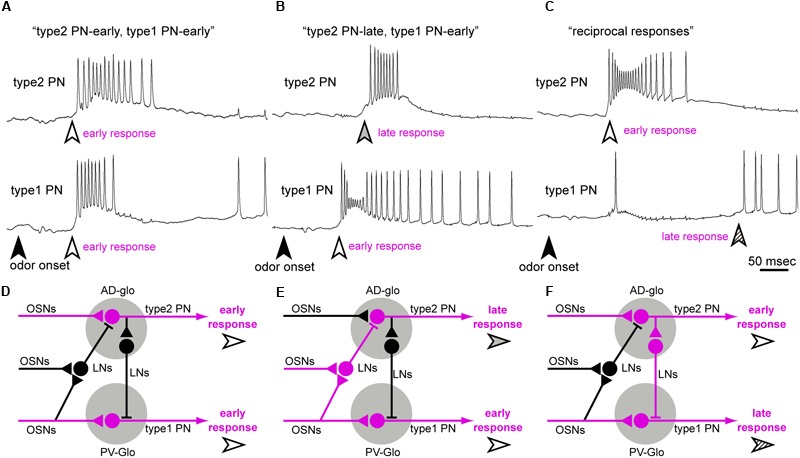FIGURE 9.

Putative neural models to elicit olfactory on-responses of type2 and type1 PNs. (A–C) Three typical combinations of temporal activity patterns revealed by simultaneous recordings from a type2 PN (top) and a type1 PN (bottom). When a given odor stimulus activated both type1 and type2 PNs, combinational response patterns are categorized into one of three typical patterns: “type2 PN-early and type1 PN-early responses” (A), “type2 PN-late and type1 PN-early responses” (B) and “reciprocal responses” (C). White and gray arrowheads, respectively, indicate latencies of early and late responses of type2 PNs. Type1 PNs often fired after a break phase (hatched arrowhead in C). (D–F) Putative models to elicit three typical combinational response patterns of type2 and type1 PNs. A given odorant activated specific neurons (magenta lines) and activated type2 and type1 PNs with different temporal patterns. Based on results of transmission electron microscopy (Distler and Boeckh, 1997a,b) and electrophysiologies from OSNs (Fujimura et al., 1991) and LNs (Husch et al., 2008, 2009; Watanabe et al., 2012a), we assumed excitatory (triangles) and inhibitory (t-shaped bar) synapses in the AL. AD-glo, anterior-dorsal group glomerulus; PV-glo, posterior-ventral group glomerulus.
